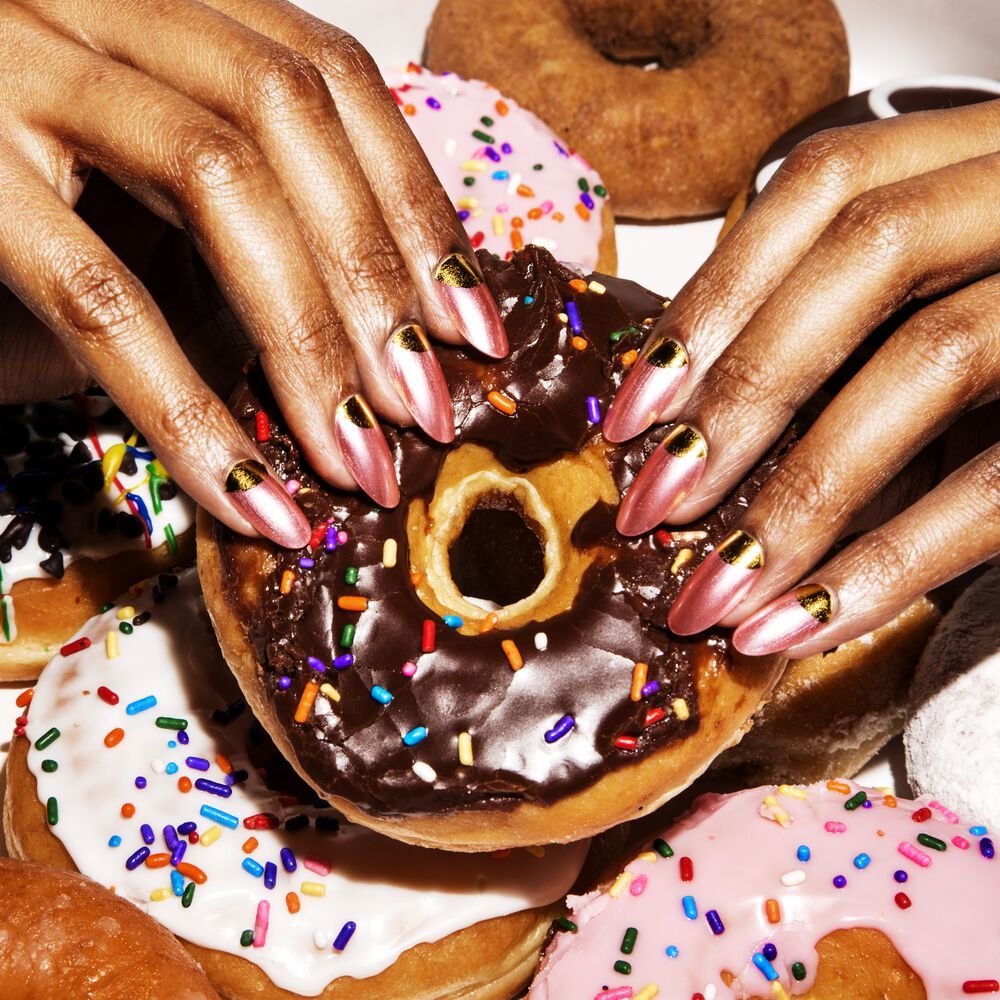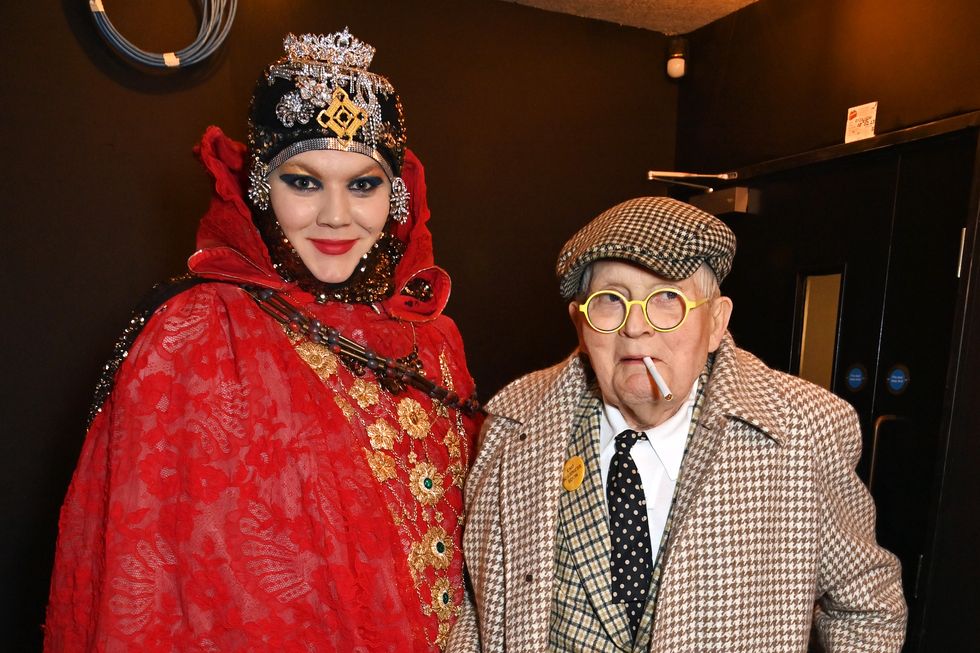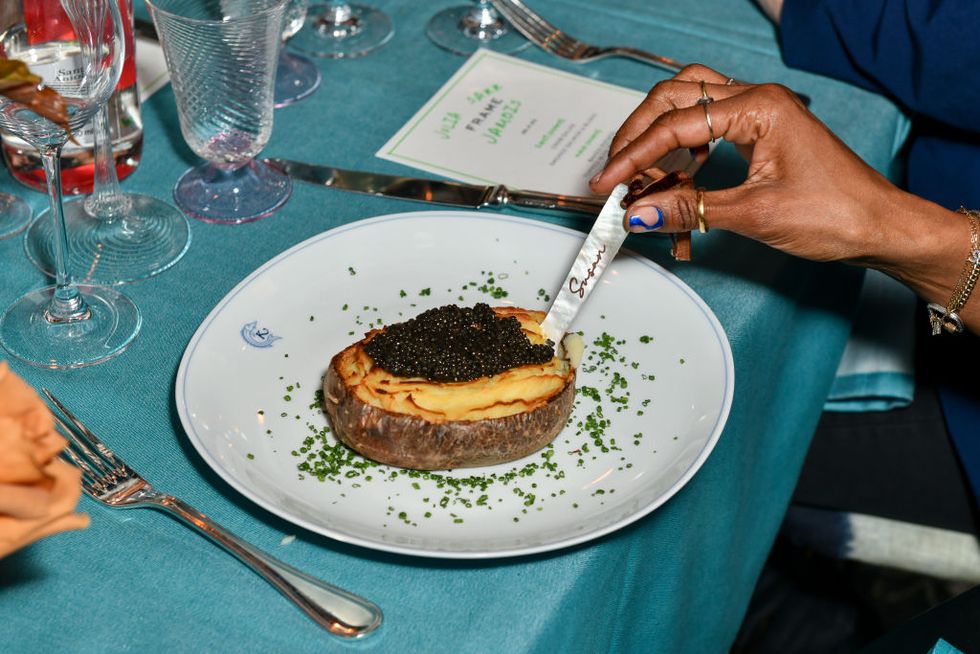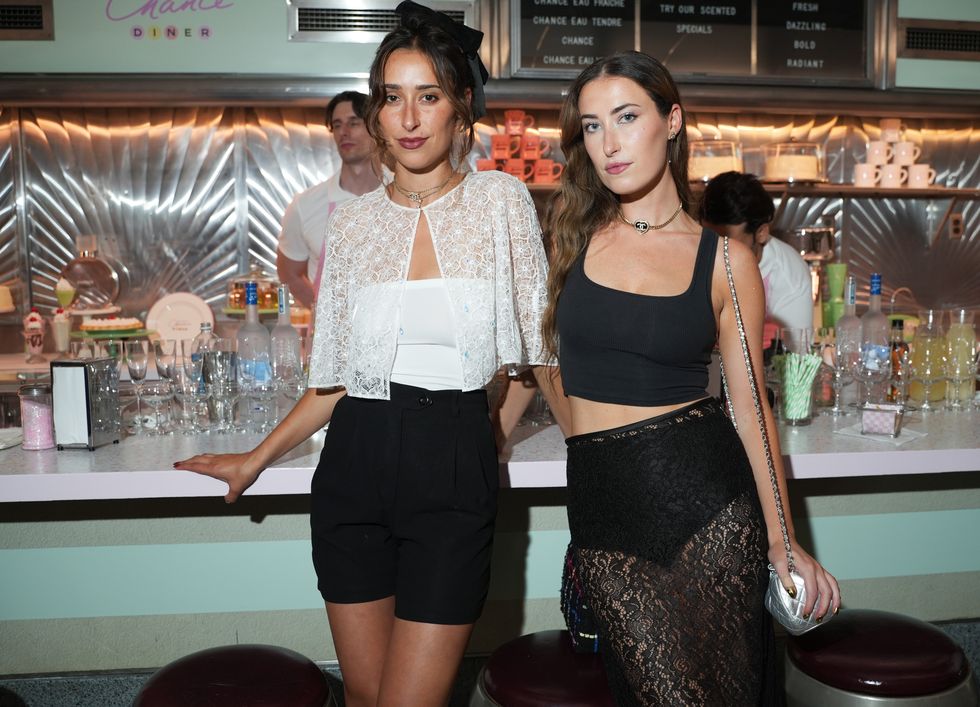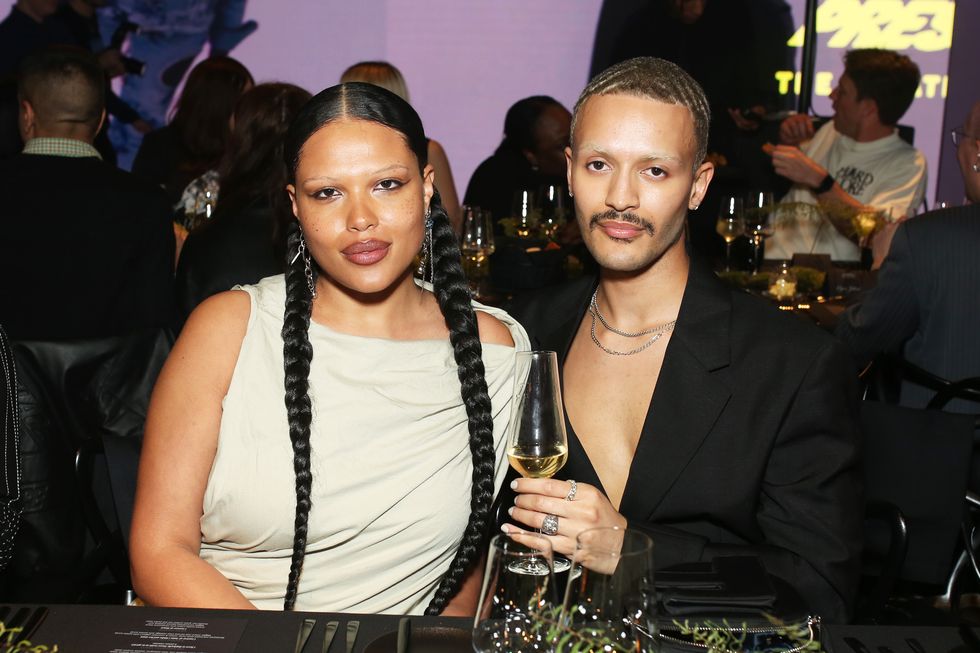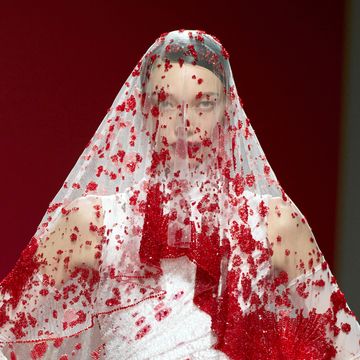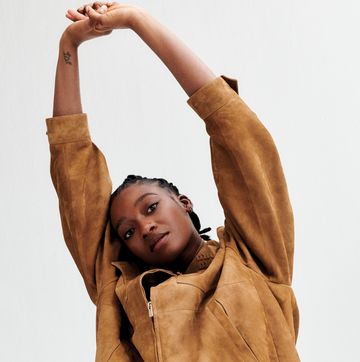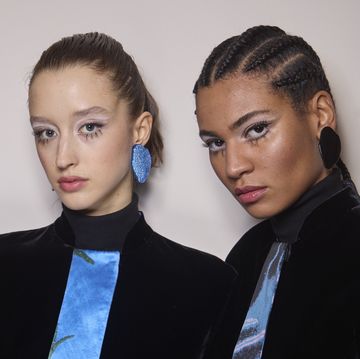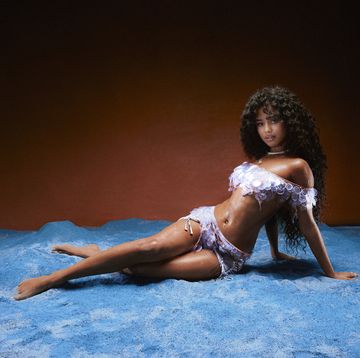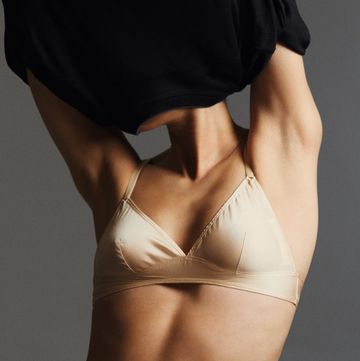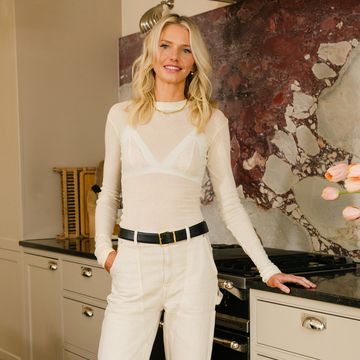'Over dinner earlier this year a creative director who we work with said she wants to stage, “the kind of party where people are f*cking in corners”,’ says Sophie Jewes. ‘It’s the kind of brief we live for.’ Jewes is the super-chic co-founder of London-based fashion-communications agency Raven. She’s thrown parties for clients including Adidas, Agent Provocateur and Flannels. ‘People are party-hungry,’ she continues. And who can blame them?
After the pandemic’s years of enforced solitude, followed by a war in Europe and the cost-of-living crisis, a febrile atmosphere has taken hold. Microdosing might be here to stay (and is now a staple in suburban circles) but, more noticeably, the air is filled once more with good, old-fashioned cigarette smoke: Kate Moss, Malia Obama, Lily-Rose Depp and even David Hockney – who supposedly set off the fire alarm at the opening of his latest exhibition with his smoking – are back on it. Vegan restaurants are struggling to survive, and brands are pulling their meat-free products as the vegan bubble that health enthusiasts once embraced bursts. Meanwhile, Gwyneth Paltrow, the very beacon of wellness, can’t say anything about her ‘cleaner than thou’ lifestyle now without becoming an instant meme.
We may once have been obsessed with optimising our lives and bodies, but in 2023 the cult of wellness finally started to release its grip on culture. ‘I think it’s been happening for a little while,’ says Rina Raphael, author of The Gospel of Wellness: Gyms, Gurus, Goop and the False Promise of Self-Care. ‘Four or five years ago, a new over-hyped product or ingredient launched every single week, and you’d see an influx of ridiculous items like, let’s say, CBD-infused leggings. You really don’t see that as much lately. Commodified wellness that is productivity-focused, pressurised, consumerist and individualistic has fallen out of fashion.’
In place of clean eating, we now have those giant croissants from Philippe Conticini (TikTok has much to answer for) and the performative indulgence of caviar and champagne; in place of #selfcare we now have the distinctly less commodifiable #bedrot (when you luxuriate in a day in bed). From Drumsheds, the 15,000-capacity superclub that opened in north London in October, to the forthcoming decriminalisation of psychedelics in California and the rise of anti-work ‘lazy girl’ careers, wellness as we’ve known it is out and fun is firmly back on the agenda.
‘Within the hospitality world, people are definitely shifting away from wellness-focused dining in favour of more hedonistic experiences,’ says Clerkenwell Boy. The food-and-travel content creator has a 300k-strong following and works as a consultant for some of the world’s best-known restaurants. ‘We’ve seen a growing number of exclusive venues like Caviar Kaspia in London, where members are required to spend a minimum of £2,000 [over the course of the year] on food (mainly caviar and champagne). It highlights a growing market where diners want a taste of extravagance and exclusivity.’
Even venues that aren’t members-only have been cashing in on the opulent vibe shift; Richard Caring’s super-luxe restaurant Bacchanalia (named after the Roman festival of drink and excess) opened at the tail end of 2022 with a wild party where fashion royalty (Naomi Campbell) mingled with actual royalty (Lady Amelia Spencer) amid faux-Greco-Roman style marble horses and Damien Hirst sculptures. The message was clear: high-octane debauchery was back.
In spring 2023, restaurant 20 Berkeley also opened in Mayfair, with the look and feel of a super-exclusive members’ club (think no signage outside other than an orange awning over a discrete black door) but a strictly open-door policy. This was followed by late-night restaurant Geode, which opened in Kensington in September, taking over a 7,000-ft Georgian townhouse. The vibe? Enter via a not-so-discrete giant chrome-gold door for great food but an even greater party, with live music and DJs on hand to entertain well into the early hours.
Even the online-food landscape has shifted. We’re no longer seeking out aesthetic ‘clean green’ dishes (is there any bigger ick than a flatlay of a Buddha bowl?). As Clerkenwell Boy points out, on socials, the kinds of dining experiences that have us clicking, liking and subscribing feature super-indulgent (and often supersized) dishes: ‘not just the giant croissants but those £25 cookies from Cedric Grolet at The Berkeley in London, smashed burgers from cult burger restaurant Dumbo in Paris (a mainstay for the fashion crowd), and massive plates of pasta and pizza – as well as giant calorific desserts – from places like the Big Mamma Group (Dua Lipa is a fan).’
According to Clerkenwell Boy, fashion houses are capitalising on our lust for all things big, greasy and satisfying. ‘In London,’ he says, ‘British designer Anya Hindmarch brought back her ice-cream pop-up for the month of August, collaborating with brands such as Heinz ketchup, Kellogg’s Coco Pops and Warburton crumpets, offering strange but delicious ice-creams. There were huge queues every day. Then, in autumn, Chanel opened a 1950s-style pop-up diner in Brooklyn, New York [to celebrate its Lucky Chance fragrance launch], serving champagne, burgers, fries and grilled-cheese sandwiches, as well as old-fashioned milkshakes and cherry pies with whipped cream. Not an avocado in sight.’ Even Chanel’s glamorous cruise show in Los Angeles in May boasted a fleet of food trucks, with guests happily eating burgers and fries alongside their flutes of champagne.
During September’s London Fashion Week, Burberry followed suit, partnering with greasy-spoon-style north-London ‘caff’ Norman’s Cafe to take traditional English café foods on the road to the show via Burberry-branded food trucks. No more green juices and avocado toast for the world’s fashion elite – instead, they chowed down on spartan plates of egg and chips or sausage sandwiches.
As Jewes notes: ‘Brands now want to stage parties that have nothing to do with specific product launches. It would be flippant to say they’re parties “just for the sake of it” – of course, there’s infinitely more thought that goes into it than that – but if you’ve had one of the best nights of your life hosted by this brand or that magazine, it’s a truly emotional connection, isn’t it? Nowadays, everyone wants to stage one of those nights that go down in history.’ Jewes argues that it goes hand in hand with the rise of concepts like quiet quitting and ‘lazy girl jobs’ – the anti-work trends that advocate for a more neutral approach to our careers. After all, prioritising fun might mean you’re hungover in the morning meeting but, if you’ve just had the night of your life, who cares?
From an ideological standpoint, our obsession with wellness for over a decade has been attributed to everything from the rapid pace of change brought on by the technological revolution to, as Raphael puts it, ‘dissatisfaction with the healthcare system; to socio-economic factors spanning back to the Sixties.’ The American author and political activist Barbara Ehrenreich chalked it up to the failure of the utopian movements of the Sixties and Seventies, and the rise of exploitative neoliberalism from the Eighties onwards. As she wrote in her 2018 book, Natural Causes: An Epidemic of Wellness, the Certainty of Dying, and Killing Ourselves to Live Longer, our obsession with optimised bodies, and with perfect health, was ‘part of a larger withdrawal into individual concerns after the briefly thrilling communal uplift some experienced in the Sixties... If you could not change the world or even chart your own career, you could still control your own body – what goes into it and how muscular energy is expended.’
What each of these theories has in common is an understanding that the quest for wellness is, at its core, a quest for control. When the world is rapidly cycling through changes, when labour markets are destabilised and work is increasingly precarious, when horror and terror are beamed into our lives at twice-hourly intervals via news alerts, when objective truth is an increasingly slippery beast, the desire to turn inwards and exert control over the last domain at our disposal – our own bodies – is understandable.
And not just understandable; the business is lucrative, too. Over the past decade, the wellness industry, now worth some £3.3 trillion, has become increasingly good at exploiting the emotional triggers that might drive someone to spend. As the years have worn on, though, our tolerance for fads and pseudo-science has slowly waned. ‘I think, at this point, the average consumer who is interested in wellness has a cabinet filled to the brim with stuff that doesn’t work,’ says Raphael. ‘They’ll tell you about some CBD cream that they were told was a “holy grail” by a magazine but, when they tried it, it didn’t work. Or, you know, some supplement, some meditation app – whatever it might be, they’re kind of tired of it.’
Of course, it’s not like the world has suddenly become a more manageable or utopian place. It’s more that, as Raphael points out, we’ve begun to push against the idea that we can spend our way out of our feelings. In place of £15 green juices and status workouts, a distinctly anti-capitalist, anti-aesthetic, anti-optimised self- indulgence has exploded – cue trends like #bedrot and ‘goblin mode’. Where #selfcare was as much an aesthetic that could be bought and sold as a way to feel better, bedrot is simply the act of lying still and doing nothing. ‘Gen Z specifically is pushing back against the hyper-productive wellness era,’ she says. ‘They’re fed up with this overly produced idea. It’s what could be called ‘millennial pink’ era of wellness; the perfectly staged açaí bowls that were associated with the “girlboss”. In that way, it’s a revolt against hustle culture. I also think it’s a pushback against the fetishising of health versus having it naturally in your everyday life.’
Our desire to feel good in body and mind hasn’t disappeared, though; it’s just morphed into something new. Alexandra Dudley is one of London’s coolest recipe developers, who curates the kind of hot-ticket dinner parties for brands and private clients that people clamour to be invited to. Nowadays, she’s often asked to plan events that have a ‘seize the moment and find the joy’ vibe about them. ‘Things that feel kind of accidental – takeaway-style pizza with homemade martinis. There’s also a move to being outside and in nature – which, in many ways, leans more towards wellness, but the messaging is different. It’s less yoga by the trees, more picnics and good wine in the outdoors.’ The reason this kind of fun feels more ‘of the moment’ is because, as Raphael alludes to, there’s no overt health messaging – but there is an awareness that togetherness, laughter and spontaneity make us feel good: ‘Gen Z don’t like the idea that their health and wellness should be work, which is essentially what the prism has been for the last 10 years. They really prioritise mental health, and don’t see beating your body up via a work out or restricting what you eat as good for your mental health.’
For Dudley, there’s been a marked shift away from anything too Goopified, especially since ‘Gwyneth Paltrow revealed that she basically eats a diet of bone broth. It was a wake-up call. Most of us knew how unhealthy that was – maybe not for her personally, but it certainly wouldn’t work for most. And that was the problem with the wellness era. It created these saint-like figures who we all measured ourselves against. The message was “perfection” and life is not perfect. The happiest people are not perfect. They are messy and can handle plans changing and life ebbing and flowing. And they know how to have fun.’
This article was originally published in the December issue of ELLE.
